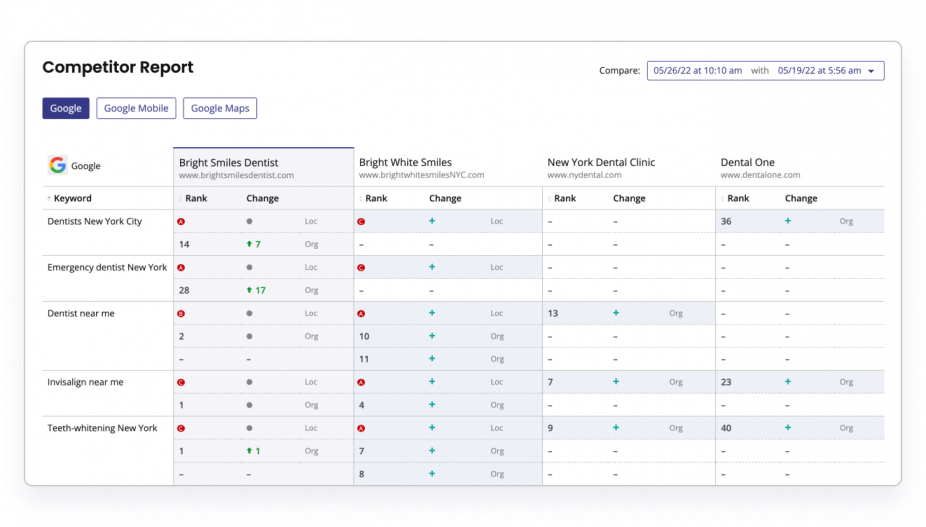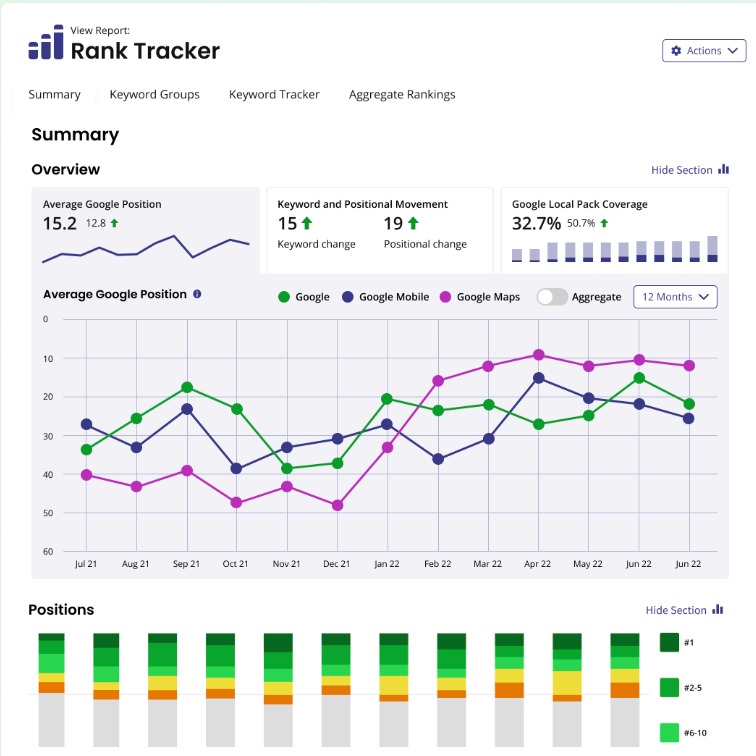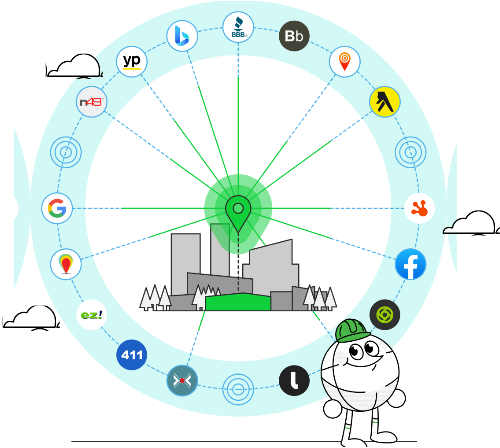Understanding and tracking local search rankings is crucial if your business serves a local market. Whether you manage a single location or dozens, being able to monitor how you’re performing locally helps you stay competitive, make informed decisions, and ultimately win more customers.
What Exactly are Local SEO Rankings?
Local rankings indicate how easily potential customers can find your business when they perform location-based searches. Think about when your business appears in Google’s “local pack” or on Google Maps. Google decides these rankings based on factors like relevance, local citations, reviews, and website optimization.
Unlike traditional search results, local rankings shift based on where the user searches from. For instance, restaurant searches vary between neighborhoods. Staying on top of your local rankings ensures your business remains visible where customers are actually searching.
How to Track Your Local SEO Rankings
Here are three common ways:
1. Manual Search (Limited Use)
You could manually check rankings, but it’s not sustainable:
- Use Incognito mode to avoid personalized results.
- Include specific locations in your searches (e.g., “Electrician Nappanee”).
- Regularly note results as rankings often fluctuate.
2. Google Search Console
Google’s free tool shows overall keyword performance but doesn’t accurately reflect precise local rankings. Data provided here is averaged and lacks detailed local insights.

3. Local Rank Tracking Tools
A dedicated local rank tracking tool provides comprehensive insights, such as:
- Rankings in the local pack and map results
- Organic local search visibility
- Competitor benchmarking
- Rankings across different neighborhoods or cities
These tools often automate reports, saving you time and making reporting straightforward.

Local Rank Trackers Explained
Local rank trackers specialize in monitoring local SEO performance. They simulate searches from real geographic locations, ensuring accurate and actionable local data.
Benefits of Using Local Rank Trackers
- Actionable insights: Quickly spot areas needing improvement.
- Efficiency: Manage numerous locations and keywords simultaneously.
- Competitive analysis: See how you’re doing compared to local competitors.
- Enhanced reporting: Clear, automated reports to stakeholders.
- SEO control: Understand which tactics are effective and which need adjusting.

Types of Local Rank Tracking Tools
At Next Level Pixels, we recommend two key types:
- Local Rank Trackers (Snapshot Reports): Monitor local organic and map rankings over time.

- Geo-grid Tools (Visual Grid Reports): Provide detailed visual reports showing your visibility across specific geographic areas.

How to Set Up Local Rank Tracking
Setting up local tracking is straightforward:
- Choose Your Locations: Identify the specific business or location.
- Select Keywords and Search Engines: Pick relevant local keywords and search platforms.
- Competitor Tracking (Optional): Monitor up to four competitors for direct comparisons.
- Notifications: Automate report deliveries to stay updated effortlessly.
Leveraging Local Rank Tracking Data
Collecting ranking data is just the start—here’s how to use it effectively:
- Highlight underperforming locations and prioritize resources.
- Benchmark against competitors to spot opportunities.
- Track effectiveness of your SEO efforts like optimizing Google Business Profiles or building citations.
- Easily communicate progress through visual reports.
Proven Strategies to Improve Local Rankings
Boost your local SEO with these tried-and-true methods:
1. Optimize Your Google Business Profile
- Consistent, accurate NAP details (Name, Address, Phone).
- Regularly update photos and respond promptly to reviews.
2. Build Strong Local Citations
Ensure consistent business listings across directories, industry-specific sites, and online platforms to boost local relevance and legitimacy.

3. Encourage Customer Reviews
Positive reviews significantly improve local trust signals. Encourage feedback at the right moment, especially on Google Business Profiles and other relevant platforms.
4. Target Location-Specific Keywords
Use location-specific keywords naturally within your content, titles, meta descriptions, and image alt texts (e.g., “Goshen roofing contractor”).
5. Gain Local Backlinks
Local backlinks from reputable local sites significantly boost your online credibility. Consider community engagement, local news, event sponsorships, and business collaborations.

Wrapping Up
Monitoring and enhancing your local search rankings isn’t a one-off task—it’s a continuous effort. By regularly tracking rankings, leveraging smart tools, and implementing effective strategies like profile optimization, citation building, collecting reviews, targeting specific keywords, and earning local backlinks, you’ll steadily increase your local visibility.
Stay consistent, adapt quickly, and watch your local customer base grow! Next Level Pixels, we specialize in local SEO strategies that drive results. Contact us today, and let’s start optimizing your business for better visibility, higher rankings, and more customers!
